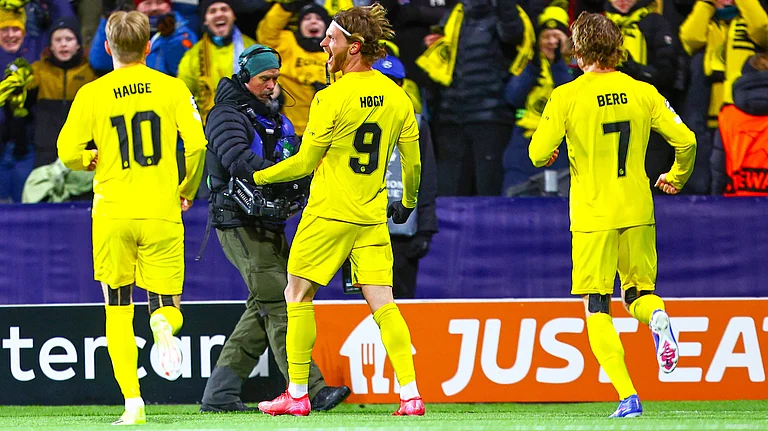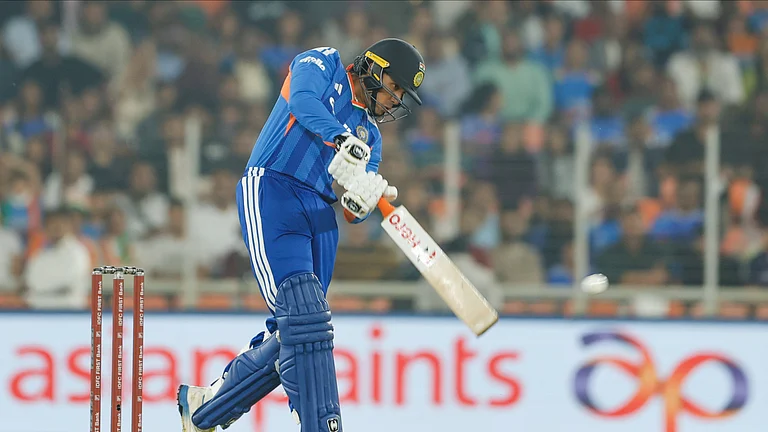Immigrant Blues
- Three Indian-origin men in the United States were shot down between February 22 and March 2
- The attacks come in the wake of the presidential election of Donald Trump, whose poll campaign targeted minorities
- Top administration is tardy in response, but calls for concern have emerged from other official quarters
- Indians are among the most well-to-do ethnic minorities in the US
- Yet the community is fragmented along regional lines, especially in places like the Silicon Valley
***
When Swathi Narayanan made the move from Chennai to California in the summer of 2013, deep waters and sunny weather were not the only reasons why she felt very much at home. The Bay Area, home to the Silicon Valley, the hub of the US infotech industry, hosts a large Indian community. Moreover, Swathi found it very easy to make friends among her American neighbours. Six months later, she shifted to Austin, Texas, where she found people to be equally welcoming.
“Everyone in both these places has been so open and cordial that I never felt I was someone from outside,” says Swathi, 30, who is now a graduate student at the University of Texas at Austin. “I strike random conversations with people crossing the road, inside buses or elevators. I never felt like a foreigner.”
But all that changed last month when Swathi heard about an Indian engineer, Srinivas Kuchibhotla, being shot dead in Olathe, Kansas. Another Indian, Alok Madasani, was injured in the shooting inside a bar, with the suspect, a US Navy veteran, reportedly shouting, “Get out of my country.”
Swathi says her Facebook wall was inundated with posts about the shooting. She herself became glued to her television set, watching Indian news channels as they went to town with the coverage. She also read everything she could find online about the incident—from details of Kuchibhotla’s life to the tearful pleas of his wife for the safety of Indians in America. It touched her deeply.
The February 22 shooting was just the beginning. Harnish Patel, an Indian-origin convenience storeowner, was shot dead outside his home in Lancaster County, South Carolina, on March 2. A day later, much the same fate awaited Deep Rai, a Sikh, in the Seattle area of Washington. The masked gunman reportedly exclaimed “go back to your own country”. These attacks have come in the wake of last November’s election of President Donald Trump, who rode to victory on a vicious campaign targeting immigrants and minorities. A general spike in hate crimes followed his win. The FBI is investigating the Seattle and Olathe shootings as hate crimes.
Indians are among the most well-to-do and well-assimilated ethnic minorities in the country. Hate crimes against them are so rare that civil rights groups don’t even track it as a separate category. But that may be changing.
“Suddenly, I am more aware of the fact that I am not from here,” says Swathi. “I look different, speak different. I am scared, worried. Austin is a very liberal city and the chance of something like this happening here is negligible. Yet that doesn’t stop me from thinking, ‘What if something happens?’”
The emotional trajectory hasn’t been different for Radhika Gajjala, an Indian-origin US citizen and a professor at Ohio’s Bowling Green State University. Gajjala says she is now more aware of her “brown body”—and those of her son and husband—in the company of white people. “We have been so happy here, we have never felt anything weird about our neighbours,” she says. “But now, there is this hesitation between us, especially on my part, because of this heightened awareness of difference. Like, when I step out of our home and see them or their kids walking away, I ask myself, ‘Are they trying to avoid me?’”
For Gajjala, though, this sense of being an outsider didn’t begin with the recent attacks, but rather when she returned to the US in August last year after an extended stay in Norway and India. That was the time when Trump’s campaign was reaching its xenophobic crescendo. Her sensitivity, Gajjala believes, has increased since his victory. “For me, this fear as a mother and wife of brown men is reminiscent of the day after September 11,” she adds, referring to the 2001 attacks on New York and Washington DC by terrorists from West Asia. “At that time, we kept hearing reports of incidents at the Toledo mosque, Sikhs being shot at and so on. I hadn’t felt that vulnerable since. That fear has re-emerged now.”
“The community is on the edge,” says Rishi Kumar, an Indian-origin Democratic city council member in Saratoga, California. “We’re going through an emotional upheaval. There is outrage and a climate of despair. Indians are wondering how they’d get through four or eight years. Where will all this lead to?”
Kumar points out that while the three shootings have drawn global attention, smaller incidents of bullying have also become common. “One of our friends, a woman, was at a street light when a Caucasian guy started making aggressive movements in front of her. She was taken aback. Another person I know, a PhD in physics who has lived here for 41 years, had parked his foreign car at a strip mall when someone asked him, ‘Are you an American? Why are you driving a foreign car?’ These are minor incidents that I know about in my area; they are perhaps happening all over the country.”
Indeed, several such incidents have come to light from other parts of the US. An Indian girl posted a video of being racially abused—by an African-American—on a New York train, who told her to “get out of here”. Meanwhile, a right-wing website posted photos and a video of Indian families at an Ohio park to suggest that foreign workers were taking over American jobs—drawing shocked reactions from Indians on social media.
Swathi attended a vigil in Austin for Kuchibhotla. “People were talking about how Srinivas’s death is an act of terrorism and how we should stand against hate,” she says. “There is fear within the Indian community that Trump’s rhetoric against immigrants, though not targeted specifically at Indians, can lead to more hate crimes against us. I don’t know if the man who killed Kuchibhotla was motivated by Trump or felt emboldened to act out because of Trump’s speeches. What scares me is that little is being spoken about how much immigrants contribute to this country, that immigrants are not to be feared of. We want to be a part of this society and participate in every way we can.”
Kumar says Indians need to do a better job of engaging politically and organising for action. “When the shooting in Kansas happened, President Trump did not immediately acknowledge it. Many of our elected leaders did not acknowledge it. If other ethnic groups are targeted, they have organisations that step up to highlight it and engage with elected leaders. Other ethnic groups have done a good job of creating a process that addresses their needs,” he says.
“We need to have a concerted action plan for how to address the needs of the Indian-American community,” Kumar adds. “We need to have a political group. We need to make sure that we are out there, that we are getting people to invest in taking care of us. We are very good at writing cheques and getting photos with politicians, but engaging ourselves has not been part of our culture.”
Although the top US administration was a touch tardy in its response, calls of concern and sympathy have emerged from other official quarters. Ami Bera, a Democratic Indian-American Congressman from California, issued a statement after Rai’s shooting. “This disturbing crime is an outrage that goes against everything we stand for as a nation of immigrants,” he said. “On the heels of the Kansas shooting, crimes motivated by hate are on the rise. Xenophobia and racism have no place in America, and we as a nation need to stand up to these hate crimes—starting with the President.”
Swathi feels the recent spate of assaults has indeed prodded the community into reflecting and acting. At an Indian community dinner she attended, “a large part of the conversation was about what we should be doing, who we should be writing to, how we should be reaching out and so on,” she says. “People wanted to know how they can engage with lawmakers.”

Indians hold a vigil in Bellevue for Srinivas Kuchibhotla
Even at the Kuchibhotla vigil she went to, Swathi was gladdened to hear people talk about what they should be doing to prevent violence from spiralling. “I am very happy that the Indian community in Austin is becoming more organised. People from the local government came to speak. It was reassuring to know that Indian organisations are thinking of engaging like this, and that others who are not Indians are concerned about us.”
Kumar is helping organise a peace rally in Palo Alto, California, on March 12. “We’ll be talking about what’s going on in the country. We will have a call to action on what we have to be doing,” he says. “The tenor of the country has changed between late last year and now. I think it comes from the leadership of the country. The leadership has to make a statement that we are all in this together. We need to collaborate and make America better.”
But the biggest hurdle to political organisation, Kumar feels, lies within the community. Indians in America are deeply fragmented along regional lines, especially in places like the Silicon Valley where they are in sizeable numbers. “There is a pretty large population of different regional groups. We don’t always see eye-to-eye on issues. That can be challenging. There is fragmentation and that needs to go away, so we can move forward,” he says.
Kumar gives the example of the “Hindu New Year” he organises annually in March, meant as a common celebration of various spring festivals from different parts of India. “We try to mark seven or eight different celebrations under one umbrella. But attendance is not great as people go to their own regional celebrations. There is a Telangana celebration that happens, and also a Gujarati celebration. Bengalis have their own celebration.”
Both Kumar and Swathi say that despite growing fears, Indians were not thinking of leaving the US and returning home. “That is not the predominant thought,” Kumar says. Adds Swathi: “People here have children, they have been here for long. Leaving the country and going away at the drop of a hat is not possible.” She gives her own example. “My parents (in India) are really scared. I talk to them every day about this. Like any parent, they would love for me to be back with them. But then they know that we can’t leave our studies and careers and just return.”
The Indian ambassador, Navtej Sarna, has raised the issue of rising hate crimes with the US administration. In a series of tweets, the Indian mission said the ambassador conveyed its “deep concerns” to the administration following the attacks and “underlined need to prevent such incidents and protect Indian community”. The US state department, it added, had “expressed condolences and assured they are working with all agencies concerned to ensure speedy justice”.
As a local leader, Kumar also works with the local Indian consulate in San Francisco. He hopes the Indian mission can also be engaged in community action. “I think our consul general has to run things by the Indian administration. We can work through them, but they have to get the green signal from India,” he said. “Having Prime Minister (Narendra) Modi engaging with the administration here would be a good starting point.”
By Saif Shahin in Ohio

























